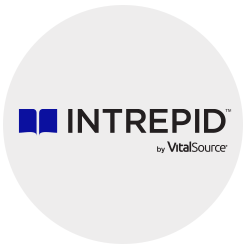Here’s a tantalizing question for learning leaders: What if you could put LESS effort into a learning initiative and get MORE benefit? What if the same effort got your organization more engaged and excited? And gave you business results to go with it?
You can! It’s the union of two things: leverage point learning and new MOOC learning tech. It’s part process and part technology, and you can apply it now.
Here’s how:
What Is Leverage Point Learning and Why Does It Matter?
Let’s back up to the 19th century for some context. Wilfredo Pareto was an early 1800s economist who discovered that 20% of the people in Italy owned 80% of the wealth. I know you’ve heard of the 80/20 rule, for which you can thank Pareto, as this relationship applies to many things in life beyond property in Lake Como. In most businesses, 80% of the profits come from 20% of the customers. In software, 20% of the bugs cause 80% of the problems. 20% of words in a language are used 80% of the time. It’s a virtual truism, but how often do we really apply it? Is your business focused on the top 20%? Do you know what that 20% really is?
So, leverage point learning is the concept that 20% of a learning activity should produce 80% of a result. That is, identifying the critical 20% of learning topics that will drive disproportionate benefit for the business.
But What If We Can Go Further?
Does the math work past 20/80? Does the top 5% of something yield 95% of the benefit?
If I offered my learners 5% of the content that got 95% of the value, would they go for it? My guess is you should be careful offering it as they’re likely to beat your door down even at just 20/80. What a differentiating and powerful offering! But how to find that 5%?
How Do You Find the Leverage Points? Where Does That 5% Live?
How do you find your exact 5% currently? Or do you even worry about finding it exactly? Do you want to place a bet on the key behaviors that you want to drive?
Michael Raynor identified something called the Strategy Paradox. Put simply, you get the most benefit from picking a strategy and going after it with gusto—and you need to go after it with gusto to make any strategy successful. So, you’re putting in a ton of effort, but what if you’ve got the wrong target? That’s the paradox.
What if you get it wrong? Is it possible to focus on the “wrong” 5%? Theoretically, absolutely. But done well, and when dealing with teams, not really. Even when focusing on the “wrong” 5%, you can still drive a ton of benefits for learners and for the business.
Let me explain. Maybe you believe, as I do, that learning is closer to “horseshoes and hand grenades” than nuclear fission—meaning, you just need to get it directionally right. A group of individuals heading in the right direction with passion can have an overwhelming impact. The Germans have a precise word for this: schwerpunkt. It means a center of gravity or focus that people rally around. When you have leaders, managers, and employees focused on the same goal or schwerpunkt, you can have outstanding results.
For the other 95% you’re ignoring, comfort yourself with the healing power of ceteris paribus, Latin for “all things remaining the same.” The business will continue on with its own inertia—your job as change agent is to push energy into the system to change the course of the ocean liner, and that requires pushing hard on a specific aspect, not on every possible aspect at once.
The most effective way I’ve found to find that 5% is to bring a sample of employees, managers, and leaders in and ask them. It can be a series of one-on-one interviews, a quantitative survey, managers only, or employees and managers. Your task: Find the top 2–3 things that float to the top and disregard everything else (for now). Declare that critical knowledge or most critical skills or behaviors as your 5% and go for it.
Whittling down to just the critical 5% is tough, but it’s as customer-centric as it gets. Rely upon the front-line troops to know their business and know what they need. Reflecting their voice back to them is a powerful way to show tangible value to the business and expand the tent of who informs and executes your training strategy.
Count on the overwhelming benefits of bringing the customer’s voice back to them in a compelling vision that they want. So much of real learning—meaning practical application to the job—comes from efforts that extend well beyond the initial training event. This means people that believe in the change own it and will lead towards it. That’s really the ultimate value of finding the 5%: The belief and commitment that come from leading the organization to it and helping them to stay on track to achieve it.
So Now That I Have It, What Do I Do With It?
Even when narrowly focused to the critical 5% of topics, you’re still battling human attention and cognition. A recent study stated that the average human attention span is now 8.5 seconds, which is less than the 9-second attention span given for goldfish. Although the findings are somewhat controversial, the larger point holds: The people we want to influence—such as employees and managers—have a finite attention span and willingness to take in and apply learning.
And what we want to affect is not “learning” in and of itself. We want application and impact. Our 5% is ultimately about the actions people take as a result of a learning event.
What if you could intelligently space out the learning for maximum impact? Think things like spacing, repetition, practice, and reinforcement, which recent discoveries in brain science have shown to be essential to effective learning.
This Is Where Corporate MOOCs Come In
New learning technologies like MOOCs play a vital role in your training strategy—and with particular benefits in 5% leverage point learning. In my experience, well-crafted MOOCs have the potential to achieve similar results as classroom training, but with higher behavioral change. All with huge advantages in cost, reach, and convenience.
I see three factors that make MOOCs so effective:
- First, it’s the spacing, which is partly driven by constraint. You only have 1.5–2.5 hours of content, action, and collaboration per week to work with (based on data from the University of Pennsylvania). That means you must be extraordinarily careful about how much content you cover and how well the content is shown.
“An editor is an advocate for the reader” is a favorite quote of mine. With MOOCs, you are the editor and your task is to whittle down the learning event to the essential elements that fit the time available. Think short videos, articles, and exercises. Limiting the volume of content you ask learners to master is part of the 5% solution.
The other aspect of spacing is creating learning experiences as longitudinal events or campaigns. You’re now spacing out learning, practice, application, and collaboration—factors shown in brain science to drive effective learning. And you’re helping groups of individuals to do this together within the interface. MOOCs can create a community learning effect that is more powerful than classroom learning or other types of online learning.
- The second factor is the rhythm of “learn, do, collaborate” that is at the heart of each MOOC week. Once you have your 5% target, you can design a learning experience over a number of weeks (typically 4–8) and deliver “just enough” learning each week to make it stick.
Have you ever been to an intensive 4-day classroom course? What happens on Monday and what do you apply? Typically, the learner must do the tough mental task of identifying and applying the 5% themselves—and they’re doing it after the learning event. MOOCs keep all learners progressing linearly through each concept through this virtuous cycle of learn-act-collaborate, one behavior at a time.
With MOOCs, you are designing in just enough learning that people can absorb, apply, and collaborate in your ~2 hours per week. You are now helping people learn at the speed of change. Their ability to absorb, apply, and see results—that’s what will ultimately drive sticky learning and business application.
- The third factor is measurement. MOOC interfaces provide a wealth of learning data from Kirkpatrick level 1 (reaction), level 2 (mastery), and level 3 (application) as part of the learning experience. You can use onboard survey tools or easily link to full-spectrum online survey engines. You can design the measurement so that it is organically occurring as part of the learning, not as an afterthought. This sets you up for the potential for continuous improvement and measurement of behavioral change and business impact (level 4).
Am I a believer in these benefits? At IQVIA, an $8B, 55,000-person healthcare organization, we converted many of our business development and management/leadership courses to MOOCs because of increased efficacy, cost savings, and geographic reach. In each instance, we saw more behavioral change than we did with traditional classroom learning. And it was reflected beyond the measurement: It helped us to create “stop you in the hall” types of learning experiences—like the one leader who told me their MOOC-based leadership training was “the best leadership training she’d had in her life.”
Making It Actually Happen
The combination of identifying the critical 5% learning objectives and driving effective learning over time with the right technology like MOOCs—spaced at a pace that people can absorb and apply the learnings in the real world—is powerful. Even better, adding two final aspects: manager engagement and learning measurement. Those are concepts that many have dipped a toe into, but few have mastered. In a subsequent post, we’ll explore tactics to leverage these other two accelerators to drive your 5% even further.
In the meantime, find your 5%. Survey your stakeholders, find the schwerpunkt at the center of the business issue, and go for it with the best learning and pull-through you can. It’s fun, stands out from how others do business, and will make your learning initiatives more visible, more integrated with the business, and help you get more results with less effort. Because after all, you’re only focusing on the top 5%!




